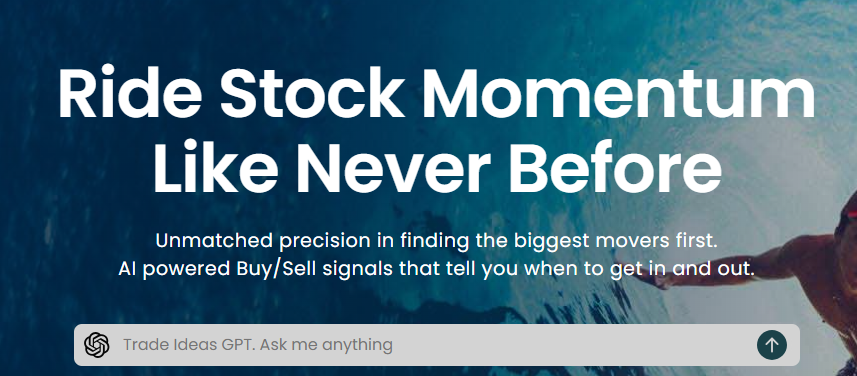20 Best Info To Deciding On AI Stock Investing Analysis Websites
20 Best Info To Deciding On AI Stock Investing Analysis Websites
Blog Article
Top 10 Tips To Assess Market Coverage Using Ai Stock Predicting Or Analyzing Trading Platforms
Market coverage is among the most important factors to take into consideration when looking at AI-powered trading platforms. This determines how many market and asset types can be accessed. A platform that has comprehensive market coverage can allow you to diversify portfolios, explore global trading opportunities and adapt to different strategies. Here are the top 10 tips for evaluating the market coverage provided by these platforms.
1. Evaluate Supported Asset Classes
Stocks: Make sure the platform includes major stock exchanges (e.g., NYSE, NASDAQ, LSE, HKEX) and also includes small-cap, large-cap and mid-cap stock.
ETFs. Make sure the platform provides a range of ETFs to gain exposure to a variety of.
Futures and options: Determine whether the platform is able to handle derivatives such as options, futures and other leveraged instruments.
Forex and commodities: Find out if your platform offers Forex and commodities, precious metals, and energy commodities.
Cryptocurrencies. Verify if the currency supports all major cryptocurrencies and altcoins (e.g. Bitcoin, Ethereum).
2. Check the coverage area
Global markets: The platform should be able to cover the major global markets, including North America and Europe, Asia-Pacific and emerging markets.
Regional focus: Find out whether the platform is focused on particular markets or regions that align with your business interests.
Local exchanges: Check if your platform supports regional and local exchanges that are relevant to you or your business plan.
3. Comparing Real-Time Data to Delayed Data Data that is delayed
Real-time Market Data: The platform needs to offer real-time trading information to allow for rapid decision-making.
The data is delayed. Check if the delayed data is available for free or at a reduced cost. This could be enough for investors who are looking to invest long-term.
Data latency: Determine whether the platform is able to reduce the latency of real-time data feeds especially for high-frequency trading.
4. Evaluation of Data from the Past
Depth and breadth of historical data: Make sure that the platform has ample historical data (e.g. for at minimum 10 years) to allow backtesting.
Granularity: Verify if the historical data includes intraday granularity, as well as daily, weekly and monthly.
Corporate actions - Examine previous data to confirm that it reflects stock splits or dividends, as well as other corporate activities.
5. Find out the market's depths and place an order for books
Data Level 2: Ensure the platform offers Level 2 (order book depth), for better price discovery.
Spreads of bids: Make sure that the platform is displaying real-time bid spreads for exact price.
Volume data: Verify that the platform has specific volume data that can be used to evaluate market liquidity.
6. Review the coverage of Indices and Sectors
Major indices : Ensure you have a platform that contains the major indexes. (e.g. S&P 500, NASDAQ 100, FTSE 100 ) This is crucial to benchmark your strategy and also for index-based strategy.
Industry-specific data If you're looking to do a targeted analysis, see if there is data available for certain sectors.
Custom indexes. Make sure that the platform is capable of creating and keeping track of custom indices that meet your needs.
7. Evaluation of the integration with Sentiment and News data
News feeds - Ensure your platform is equipped with the most up-to-date, market-driven news feeds (e.g. Bloomberg, Reuters).
Sentiment analysis: Determine if there are tools for sentiment analysis based off of news articles or other data sources.
Trades driven by events: Check the platform's support of event-driven trades (e.g. reports on economic data, earnings announcements).
8. Verify Multimarket Trading Capabilities
Cross-market Trading: Verify that the platform allows you to trade across multiple markets and asset classes from an unifying interface.
Currency conversion: Check if your platform supports multiple-currency trading and automatic currency conversion.
Support for various time zones Check that the platform supports trading on global markets in various time zones.
9. Assessment of Alternative Data sources
Alternate data sources: To get new insights, make sure that the platform incorporates alternative data sources.
ESG data: Verify whether the platform has environmental, social, and governance (ESG) information for socially responsible investment.
Macroeconomic data: Check that the platform offers macroeconomic indicators for fundamental analysis (e.g. GDP rate, inflation rates, interest rates).
10. Review Market Feedback and User Reviews. Reputation
User reviews: Research user feedback to gauge the coverage of the platform's market and reliability.
The reputation of the company: Find out whether the platform is acknowledged by experts in the industry for its market coverage.
Case studies and testimonials These will demonstrate the platform's performance in certain asset classes or markets.
Bonus Tips
Trial period: Use an unpaid trial or demo to evaluate the market coverage and data quality.
API access - Check if the API can be used to access information on the market in a programmatic manner.
Customer support: Check whether the platform offers assistance for questions related to data or markets.
These guidelines will assist you evaluate the market coverage provided by AI trading platforms that predict/analyze stock prices. So you'll be able to select the platform that gives you the information and markets you need to be successful in trading. A broad market coverage can enable you to diversify, explore the market, and adjust your portfolio to new market conditions. Take a look at the top ai stock trading app advice for blog tips including ai investment platform, ai stock, ai for stock predictions, best ai stock trading bot free, ai for investing, ai stock picker, ai stock trading bot free, using ai to trade stocks, options ai, trading ai and more.
Top 10 Tips On How To Evaluate The Scalability Ai Trading Platforms
To ensure that AI-driven stock trading and prediction platforms are scalable as well, they should be able to handle the ever-growing volume of data and complexity in markets, as well as the demands of users. Here are the top 10 suggestions on how to evaluate scalability.
1. Evaluate Data Handling Capacity
Tip: Make sure the platform you're considering is able to handle and analyze large data sets.
Why: Scalable platform must be capable of handling the increasing volumes of data with no degradation in performance.
2. Check out real-time processing capabilities
See how the platform handles real-time data streams, such as stock prices and breaking news.
Why trading decisions are taken in real-time. Delays could cause traders to miss out on opportunities.
3. Cloud Infrastructure and Elasticity The Cloud Infrastructure and Elasticity
Tip. Check if the platform is using cloud-based infrastructure like AWS, Google Cloud and Azure, which can scale resources on demand.
Why cloud platforms are so popular: They provide elasticity, allowing the system to expand or contract based on demand.
4. Algorithm Efficiency
Tips: Assess the computational efficacy of AI models (e.g. deep learning or reinforcement learning, etc.)) that are used to make predictions.
Reason: Complex algorithms can be resource-intensive, therefore optimizing them is key for scalability.
5. Examine Distributed and Parallel Computing
Make sure the platform is using parallel computing or distributed computing frameworks.
What are they: These technologies speed up the processing of data and allow for analysis across multiple nodes.
Examine API Integration & Interoperability
Tips: Make sure to check the integration of the platform with external APIs.
Why? Seamless integration allows the platform to be adapted to the changing environment of trading as well as data sources.
7. Analyze User Load Handling
You can simulate the high user traffic and observe how the platform responds.
The reason: A platform that is scalable should maintain performance even as the amount of users grows.
8. Examine the Model Retraining Adaptability
Tip Assess how frequently the AI models can be taught with new data.
Since markets change constantly, it is important to keep models up-to-date.
9. Examine for fault tolerance and Redundancy
TIP: Make sure your system has redundancy and failover mechanisms to handle hardware or software failures.
The reason trading can be costly So the ability to handle faults and scale are vital.
10. Monitor Cost Efficiency
Examine the cost of your platform that includes cloud resources, storage and computing power.
Why: It's important to keep a balanced equilibrium between the expenditures and costs for performance.
Bonus tip Future-proofing
Making sure that the platform can be able to adapt to new technology (e.g. advanced NLP, quantum computing) and changes in regulatory requirements.
These factors can assist you in assessing the potential of AI-powered stock prediction and trade platforms. They'll also be sure they're robust and efficient and ready to expand, and are future-proof. View the top find about best ai stocks for more advice including can ai predict stock market, stock predictor, chart ai trading, invest ai, how to use ai for stock trading, ai in stock market, ai stock trader, ai investment tools, ai trading tool, ai stock analysis and more.